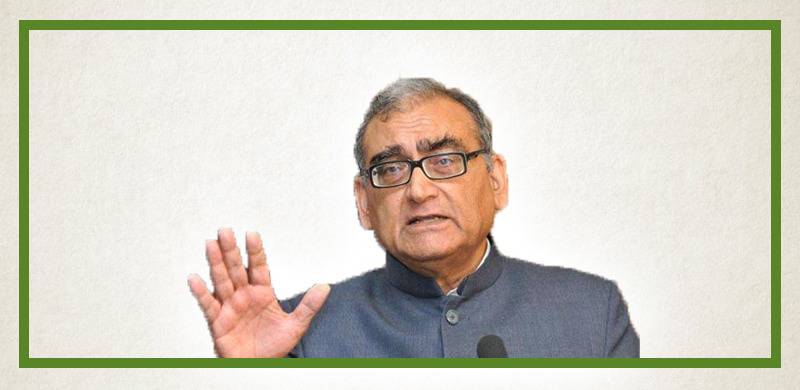
Justice Markandey Katju argues that the polarisation and intolerance in India has increased and bad days are ahead for the 200 millions Indian Muslims.
I regret to say this, but I must speak the truth: bad days are coming for the 200 million Indian Muslims.
Consider the facts
Muslims are painted as seducers of Hindu girls (called love jihad).
In many schools, Hindu children tell their Muslim classmates that Muslims are terrorists and should go to Pakistan. They ask them whether their fathers manufacture bombs.
From my personal experience, I can say that when I am with my Hindu relatives and friends, and they are sure no Muslim is present, they often spout venom on Muslims.
States like West Bengal, which were bastions of secularism, have become highly polarized.
In part, this was due to Mamata Banerji’s Muslim appeasement policy (e.g. announcing Rs 25,000 p.m. salary to the imams of each of the 30,000 mosques in the state, and Rs 15,000 to each of the muezzins, which was struck down by the Calcutta HC). Mamata thought that this way she could keep the 28% Muslims in her pocket, but she drove most of the 70% Hindus towards the BJP. The same may happen in Tamilnadu, Andhra Pradesh, Odisha, etc
Even in the Bay Area of California, where I am staying presently, the NRI community has become highly polarized.
But the feudal mindset and practices have continued even after independence, as is evident from the rampant casteism and communalism prevalent in India even today. So India can be called a semi-feudal country.
What has happened after the BJP came to power in 2014 is this: whereas earlier communalism was largely latent and erupted only occasionally, now it has become open, virulent, and continuous. This is because the BJP thrives on communalism. It knows that the 15% Muslims of India will always vote against it, so it seeks to unite the 80% Hindus and bring them under its fold.
Hindus are normally divided on caste lines, but they can be united by fanning hatred against Muslims, and this is what the BJP does, e.g, by hate speeches against them, demonising them as fanatics, terrorists, anti-nationals and cow killers, and by instigating communal riots.
When recent agitations started against CAB, Modi said in a speech in Jharkhand that the agitators all wore a certain dress, insinuating the Muslims (though in fact in Assam all Assamese were demonstrating against CAB, not just Muslims). A former BJP Union Minister garlanded alleged lynchers, and a present Union Minister called Muslims ‘haraamzadas’ (bastards).
I regret to say this, but I must speak the truth: bad days are coming for the 200 million Indian Muslims.
Consider the facts
- About 80% of the Indian population is Hindu, and most Indian Hindus have become highly communal and polarized (i.e. anti Muslim), particularly after the BJP came to power in 2014. In their eyes, most Muslims are fanatics, anti-national and terrorists. So when a Muslim is lynched by so called go-rakshaks (cow vigilantes), most Hindus are indifferent, and some even happy. One terrorist less.
Muslims are painted as seducers of Hindu girls (called love jihad).
In many schools, Hindu children tell their Muslim classmates that Muslims are terrorists and should go to Pakistan. They ask them whether their fathers manufacture bombs.
From my personal experience, I can say that when I am with my Hindu relatives and friends, and they are sure no Muslim is present, they often spout venom on Muslims.
States like West Bengal, which were bastions of secularism, have become highly polarized.
In part, this was due to Mamata Banerji’s Muslim appeasement policy (e.g. announcing Rs 25,000 p.m. salary to the imams of each of the 30,000 mosques in the state, and Rs 15,000 to each of the muezzins, which was struck down by the Calcutta HC). Mamata thought that this way she could keep the 28% Muslims in her pocket, but she drove most of the 70% Hindus towards the BJP. The same may happen in Tamilnadu, Andhra Pradesh, Odisha, etc
Even in the Bay Area of California, where I am staying presently, the NRI community has become highly polarized.
- It is not that there was no communalism, prior to 2014 when the BJP came to power. Secularism is a feature of industrial society, not of feudal or semi feudal society. In India the feudal economy was largely destroyed after Independence by the zamindari abolition laws and the growth of a limited degree of industrialization.
But the feudal mindset and practices have continued even after independence, as is evident from the rampant casteism and communalism prevalent in India even today. So India can be called a semi-feudal country.
What has happened after the BJP came to power in 2014 is this: whereas earlier communalism was largely latent and erupted only occasionally, now it has become open, virulent, and continuous. This is because the BJP thrives on communalism. It knows that the 15% Muslims of India will always vote against it, so it seeks to unite the 80% Hindus and bring them under its fold.
Hindus are normally divided on caste lines, but they can be united by fanning hatred against Muslims, and this is what the BJP does, e.g, by hate speeches against them, demonising them as fanatics, terrorists, anti-nationals and cow killers, and by instigating communal riots.
When recent agitations started against CAB, Modi said in a speech in Jharkhand that the agitators all wore a certain dress, insinuating the Muslims (though in fact in Assam all Assamese were demonstrating against CAB, not just Muslims). A former BJP Union Minister garlanded alleged lynchers, and a present Union Minister called Muslims ‘haraamzadas’ (bastards).
- The Indian institutions have been ‘saffronised’, including the Supreme Court, as is evident from its disgraceful Ayodhya verdict, its treatment of Justice Kureshi, etc, and the ‘Hinduisation’ of history and science. All this bodes ill for Indian Muslims.
